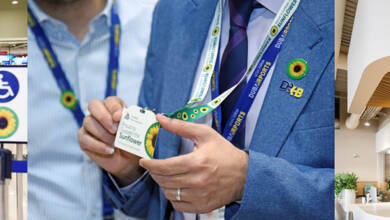The UAE can bring the coronavirus outbreak under control within three to four weeks – if the public adheres to the stay home order, a government doctor said.
Every day the number of people is increasing and this is because testing is increasing. Most of the cases are mild and many receive no treatment
Dr Adil Sajwani, Ministry of Health and Prevention
Dr Adil Sajwani said the country should turn a corner and begin to ‘flatten the curve’ in the next month.
But he warned the fight would be prolonged if residents ignore strict measures taken to curb personal travel.
“We hope that within three to four weeks, if everyone co-operates, that we will flatten the curve,” said Dr Sajwani, a family medicine specialist the Ministry of Health and Prevention and member of the national awareness team for Covid-19.
“Flattening the curve depends on the people. If they do not [help], the government has to take strong measurements to let them stay home. It will take longer if people do not co-operate.”
He said the sharp rise in cases in the past week – roughly 300 new patients each day – was to be expected and should not alarm the public.
“Every day the number of people is increasing and this is because testing is increasing,” he said.
“Most of the cases are mild and many of them receive no treatment.
“Only some cases need treatment but, again, we will not reach zero cases soon.”
He warned of the continued need for a 24-hour stay home order in Dubai and predicted other emirates would soon tighten rules on personal travel.
He said the country has been testing about 15,000 to 20,000 people per day, which has allowed patients to be quickly identified, and many others ruled out.
He also said the Emirates has looked to emulate the mass testing seen in South Korea and Germany. A robust approach to testing has been credited with bringing the outbreak in those countries under control, while in others it has become out of hand.
“We are one of the top countries in the world for mass testing … above 600,000 which is very high. It is very important,” he said.
Despite the prediction that numbers will be brought under control, he was not able to say when – without a vaccine – restrictions on travel would be lifted.
“It is possible without proper treatment and vaccination to flatten the curve, but again, people have to stay home and maintain physical distancing,” he said.
What is flattening the curve?
Any health system has a maximum capacity, including the Emirates.
And a steep, sharp increase in patients can only be managed for so long, as beds fill up and staff become overwhelmed.
The phrase ‘flatten the curve’ means to slow the rapid growth of new patients to a manageable level, as the graphic shows above. That gives hospitals time to treat them and allow them to recover.
The best example is likening the healthcare system to a train carriage that can only hold so many people at one time.
If you stagger rush hour, that allows everyone the chance to get a seat at some point.
The phrase has also become shorthand for turning a corner or reaching the ‘tipping point’, after which countries will begin to see a falling number of cases each day.
Lockdowns, curfews and stay home orders are seen as key to flattening the curve, as that limits the number of people that could catch the virus from someone else.
In the absence of a vaccine, which is estimated to be at least 12 months away, the theory is regarded as the best course of action we have at present.




